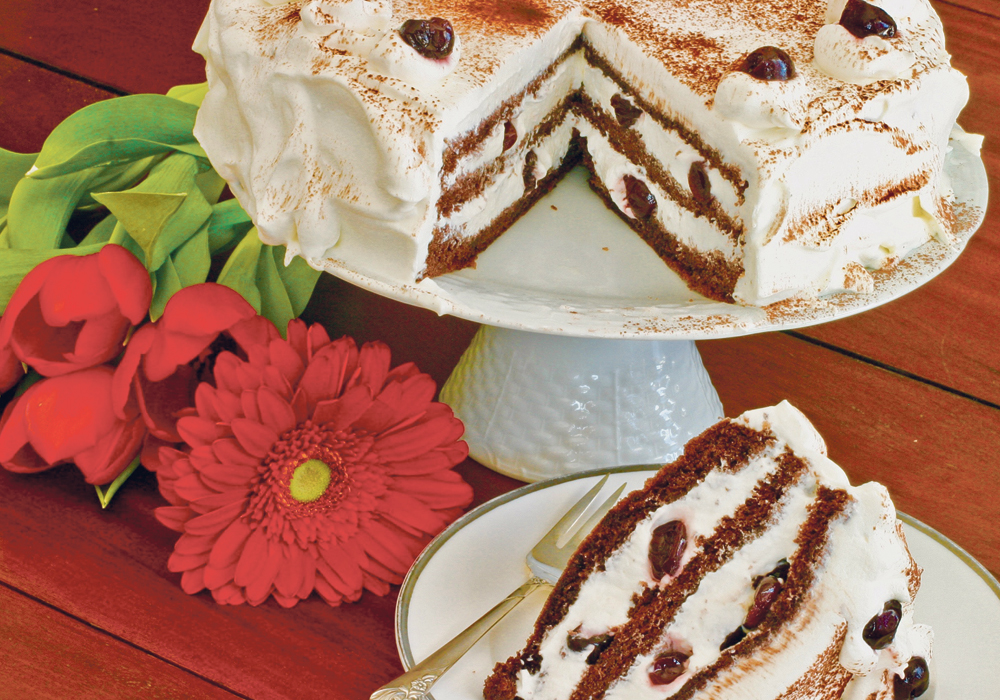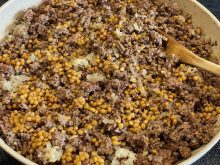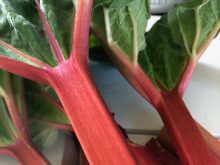Today there is nothing more special than a home-baked cake. Yes, a cake. Not muffins, cookies, a pie, a loaf or brownies. A simple cake. It seems to be a lost art.
It has been a long time since I have made a cake, too. A few reminders will bring wonderful results.
Follow the recipe. So simple yet so often not done.
Cakes are like a scientific formula. Every ingredient has a purpose. Unless you do your research, don’t make substitutions.
When the recipe says have eggs, butter or other ingredients at room temperature it means that. Leave them out of the refrigerator for at least half an hour or up to two hours for butter. Creaming butter with sugar traps air and helps with leavening. Cold butter doesn’t do this.
Read Also

Nutritious pork packed with vitamins, essential minerals
Recipes for pork
Flour is the most commonly mis-measured ingredient. When measuring flour, use a spoon and scoop the flour into the measuring cup. Do not pack flour down and do not tap the measuring cup. Both cause the flour to settle in the cup. After you’ve spooned the flour into the measuring cup, use the back of a knife to level off the top of the measuring cup.
Cake flour is a low protein flour that’s finely milled into a delicate consistency. It produces a more tender cake. If the recipe calls for cake flour it’s best to use cake flour.
Don’t open the oven. Opening the oven lets in cool air and the temperature change causes the rising cake to sink.
Rather, follow the baking time in the recipe and check the cake one or two times for doneness.
You can determine if a cake is done by sticking a toothpick in the centre of the cake and if it comes out clean, it’s cooked. But another method may be better. Gently press down on the cake. If the cake bounces back completely, it’s done. If your finger left a dent in the cake, it needs more time
Black Forest cake
- 3 tbsp. unsalted butter, melted and cooled, (plus more for buttering cake pan) 45 mL
- 1/2 c. unbleached all-purpose flour (plus more for dusting pan) 125 mL
- 1/4 c. cocoa 60 mL
- pinch salt
- 6 large eggs, at room temperature
- 3/4 c. sugar 175 mL
- 1 tsp. vanilla extract 5 mL
Syrup:
- 1/2 c. sugar 125 mL
- 2 tbsp. kirsch 30 mL
Assembly:
- 4 c. heavy cream 1 L
- 1 c. icing sugar 250 mL
- 2 tsp. vanilla extract 10 mL
- 2 c. sour cherries drained 500 mL
- 8 fresh cherries with stems, optional
- 1 tbsp. cocoa 15 mL
Preheat oven to 325 F (160 C). Line bottom of a nine-inch (22 cm) spring form pan with parchment paper, but do not grease the pan.
Sift 1/2 cup (125 mL) flour, cocoa and salt together onto a sheet of parchment paper and set aside.
In the bowl of a stand mixer fitted with whisk attachment, beat eggs, sugar and vanilla at high speed until mixture has tripled in volume and is very thick, about five minutes.
Lower speed and carefully tap dry ingredients into egg mixture. As soon as all the flour has been added to the eggs, stop the machine. Pour in melted butter. With a large rubber spatula, using as few strokes as possible, finish folding the flour mixture and butter into the batter until evenly mixed.
Immediately scrape batter into the prepared pan and bake until cake feels just firm to the touch, about 40 minutes. Cool cake completely in the pan.
To make the syrup place sugar and 1/2 cup (125 mL) water in a small saucepan over medium-high heat. Bring mixture to a boil while stirring to dissolve the sugar. Add kirsch and remove from heat. Pour syrup into a small cup and set it aside.
To assemble the cake, in a large bowl, whip cream with sugar and vanilla on medium-high speed until it holds firm peaks. Do not overbeat. The whipped cream should be smooth and firm. Divide cream into four equal portions and set them aside. Drain cherries and divide them into two equal portions.
Reserve eight to 12 cherries to garnish the top of the cake if you do not have fresh cherries.
Place cake on a work surface with its original top up. Trim off any hard crusts. With a long serrated knife, cut the cake horizontally into three even layers.
Transfer top layer to a serving plate, top side down. Brush it liberally with the syrup. With an offset spatula or rubber spatula, smooth on a 1/2-inch (1.2 cm) layer of whipped cream. Push the cream a little beyond the edge of the cake.
Nestle half of the cherries into the whipped cream, scattering them evenly over the top.
Place the middle cake layer on top of the cherries, pressing it lightly into the whipped-cream layer. Brush with syrup, spread with whipped cream and scatter the remaining half of the cherries over the cream.
Finally, add the last cake layer, cut side up, on top of the cherries, again settling it into the whipped cream layer. Brush with syrup. With an offset spatula or rubber spatula, spread a thin layer of whipped cream over the top of the cake. Spread a thicker layer onto the sides.
Scoop the remaining whipped cream into a pastry bag fitted with a medium star tip. Pipe fat rosettes all around the top edge of the cake. Press a cherry into the centre of each rosette.
Dust cake top with cocoa.
Refrigerate for at least four hours to let the flavours meld.
Italian sponge cake
For a lighter dessert, omit the cream cheese.
- 6 large eggs, at room temperature
- 1 c. sugar 250 mL
- 1 tbsp. lemon juice 15 mL
- 1 tsp. finely grated lemon zest 5 mL
- 1 c. all-purpose flour 250 mL
- 1/4 tsp. salt 1 mL
- 2 tbsp. unsalted butter, melted 30 mL
- 1 tsp. vanilla extract 5 mL
Cream and strawberries:
- 1 1/2 c. whipping cream 375 mL
- 1/2 – 4 oz. package brick cream cheese, at room temperature 60 g
- 1/3 c. sugar 75 mL
- 1/2 tsp. lemon zest 2 mL
- 2 tbsp. lemon juice 30 mL
- 1 tsp. vanilla extract or vanilla bean paste 5 mL
- 4 c. fresh strawberries, hulled and sliced 1 L
- 1/3 c. good quality strawberry jam 75 mL
- icing sugar, for dusting
Preheat oven to 325 F (160 C).
Line bottom of a nine-inch (22 cm) spring form pan with parchment paper, but do not grease the pan.
Whip eggs and sugar on high speed until they are almost white in colour, more than triple in volume and hold a ribbon when the beaters are lifted, about five minutes. On medium speed, add zest and juice.
Sift flour and salt and, still on medium speed, add flour. Spoon about a cup (250 mL) of the batter into a bowl, and stir in the melted butter and vanilla.
Add this all back to the full batter and stir until blended.
Pour batter into prepared pan and bake for about 40 minutes until the centre of the cake springs back when gently pressed. Cool cake completely in the pan.
Whip cream until it holds a soft peak when the beaters are lifted.
In a separate bowl, beat the cream cheese to soften, and beat in the sugar, lemon juice and vanilla or vanilla bean paste. Fold in the whipped cream in two additions. Chill until ready to assemble.
When ready to assemble the cake, stir the berries with jam to coat. Run a knife around the inside edge of the cake pan to loosen it, then remove it from the pan and peel off the parchment paper.
Slice the cake in half horizontally. Spread half of the cream over the cake and top with half of the berries. Place the top of the cake over the berries, and top this with the remaining cream and berries, leaving an inch or two of the cake exposed around the outside edge. Dust this edge with icing sugar and chill until ready to serve. Bring it to room temperature before serving for maximum flavour.
The cake can be assembled up to four hours in advance.
Sarah Galvin is a home economist, teacher and farmers’ market vendor at Swift Current, Sask., and a member of Team Resources. She writes a blog at allourfingersinthepie.blogspot.ca. Contact: team@producer.com.

















